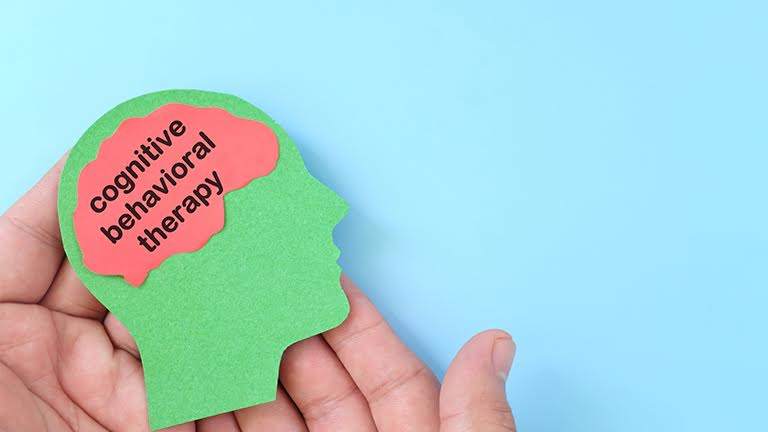
Hong Kong mother Jane* was struggling with excessive worry and anxiety, which was affecting her daily life and relationships. She felt unable to leave her baby in the care of others, including her helper and husband. She shared she had had difficulty conceiving and that, after several miscarriages, this was her miracle baby. She was exhausted yet felt unable to trust anyone to help her.
Today, Jane is doing well. The benefits of Cognitive Behavioural Therapy (CBT) were evident, helping to reduce her anxiety symptoms, develop her coping strategies, and improve her overall quality of life.
What is Cognitive Behavioural Therapy?
Cognitive Behavioural Therapy is a widely recognized, empirically supported psychotherapy approach used to treat various mental health conditions. At its core is the idea that our thoughts, feelings, and behaviours are interconnected and influence each other; if we change the way we think and behave, we can also change our emotional responses and improve our mental well-being (Beck, 2011). A collaborative and goal-oriented approach, CBT focuses on identifying and modifying negative thought patterns and maladaptive behaviours that contribute to psychological distress.
By targeting the interplay between thoughts, feelings, and behaviours, CBT can help clients challenge negative patterns and develop more adaptive, constructive ways of thinking and coping. A structured, goal-oriented approach, CBT offers clients practical tools for managing their mental health and improving their overall well-being.
How Cognitive Behavioural Therapy is Done
We work with clients to identify specific goals for treatment and develop strategies to achieve those goals. In Jane’s case, specific treatment goals included challenging and modifying her negative thought patterns, learning relaxation techniques to manage the physical symptoms of anxiety, and engaging in exposure exercises to confront her feared situations.
How did we do this?
We worked collaboratively with Jane to identify and challenge her maladaptive thinking patterns, such as catastrophising and overestimating the likelihood of negative outcomes, and we discussed potential scenarios and the likelihood of them happening.
We also delved into Jane’s miscarriages, how they made her feel, and how they had exacerbated some of her worries. We worked with her to identify and process the pain and fear she was carrying, enabling her to understand the full extent of the impact her miscarriages had had on her and, by extension, those around her.
When Jane shared numerous examples of how people close to her had let her down in the past, we explored how these incidents had affected her. She was fixated on having a routine for her baby and often felt disappointed by the performance of others when they cared for her child. She was concerned about lapses in concentration by her husband or helper, believing these could lead to catastrophic outcomes. Whenever her husband urged her to relax or see friends, she felt misunderstood, causing her to withdraw further.
To address these challenges, we utilized the Socratic method of questioning to encourage Jane to explore new perspectives and come to self-generated conclusions (Kennerley et al., 2019). Cognitive restructuring techniques also helped her replace negative, irrational thoughts with more balanced, realistic ones.
As part of the process, we assigned “homework” tasks after each session, such as encouraging Jane to take small steps in building trust by giving her husband and helper more opportunities to help with childcare while communicating safety was her top priority. Rather than shutting down in difficult situations as she had done previously, we encouraged Jane to increase her active communication to improve her household’s understanding of her thought process and the areas where they could provide more helpful support.
We also encouraged Jane to engage in exposure therapy, which involved gradually confronting situations that triggered her anxiety, like leaving the house for short walks. While initially uncomfortable, this approach allowed her to feel a sense of normalcy during her walks. We suggested gradually taking more time off, and Jane went on to pursue self-care activities she was interested in but had previously not been able to prioritize. Through systematic desensitization and graded exposure, Jane learned to tolerate and eventually overcome her anxieties and fears. Additionally, we incorporated behavioural activation techniques to increase Jane’s engagement in pleasurable, rewarding activities, thereby boosting her sense of accomplishment and enjoyment.

The benefits of Cognitive Behavioural Therapy
The benefits of Cognitive Behavioural Therapy were evident. Over the course of ten weekly CBT sessions, Jane demonstrated significant improvement in her mental health. She reported an improved ability to cope with stressors, and increased confidence in managing her anxiety. Through the therapy, Jane made progress in challenging her negative thought patterns and developing more adaptive ways of thinking and, by the end of the treatment, she reported an overall improvement in her quality of life.
Overall, the CBT approach enabled Jane to overcome many of the anxieties and fears that had been weighing her down. She emerged from the sessions with a renewed sense of control and positivity.
We hope the above sheds some light on the effectiveness of cognitive behavioural therapy and the importance of individualised, evidence-based treatments in addressing mental health challenges and promoting positive outcomes for clients.
Photo Credits:
First image: Istock pc: John Kevin
Second image: Istock pc: champpixs
References
Beck, J.S. (2011). Cognitive behavior therapy: basics and beyond. Guilford Press.
Kennerley, H., Kirk, J., & Westbrook, D. (2017). An introduction to cognitive behaviour
therapy: skills and applications. Sage Publications.

Patricia Toh
About the author
Co-founder of Momentum Counselling, Patricia Toh has experienced the highs and lows of being an expatriate, a finance professional of almost two decades, and a working mother of two young children, thus understands the complexities and challenges clients may navigate. She works with couples and individuals to overcome relationship/marital challenges, career-induced stress, postpartum anxiety/depression, parent-adolescent communication barriers, and anxiety and depression.
Recently Added
Parental mental health plays a monumental role in a child’s social, emotional, behavioural and psychological development. Parents and caregivers are central to …
Generation Z, popularly known as Gen-Z, is the class of individuals born between 1996 and 2010. These individuals were born directly into …
Adaptogens are a class of natural herbs, roots, and mushrooms that assist the body in adapting to stressors in the environment. These …




